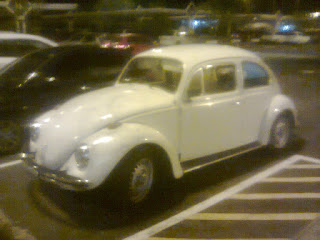Among some "people's car" projects which development started in Europe at the interwar period, the Citroën 2CV is arguably one of the smartest designs. Versatile, simple to mantain and capable to overcome harsh environmental conditions, it served not just the urban folks but also became a valuable workhorse for small farmers. Popular not only in France, but also in Argentina, Uruguay and Chile among other countries, in some of those it reached the same cult status enjoyed by the Volkswagen Beetle in my homeland Brazil.
Debates about which technical solution is effectively better become quite fierce when the front-engine front-wheel drive approach is compared to the Beetle's rear-engine and rear-wheel drive, but the 2CV doesn't disappoint when it comes to off-road capability. Its suspension system with each side wheels interconnected through a longitudinal spring leads it to incline a lot while cornering at higher speeds, but FWD makes its reactions quite predictable, plus it helps balancing the weight bias even while loaded and therefore not compromising its aptitude to go through rough terrain and unimproved roads. The engine, which is often anedoctally quoted as a copy of some early BMW R-Series, is actually quite advanced for its time, featuring overhead valves when BMW still relied mostly on the flathead layout at the time the 2CV was initially designed. Even though the air-cooling and wasted-spark ignition could be deemed outdated, these features were desirable to improve its capability to survive under the extreme cold weather which could damage a water-cooled engine, while the lack of a distributor meant the ignition to be more resistent to water/moisture. With so many clever design features, no wonder the Citroën 2CV served as a base for what might be one of the earliest "crossover" SUVs, the Méhari, which also had the availability of a dual-range 4-wheel drive system as a premium feature despite the regular front-wheel drive serving just right for the overwhelming majority of its buyers.
Front-engine also led to an easier accessibility of the luggage compartment from the outside, and eventually some load hauling. The 4-door body provides an easier access to the luggage compartment from the inside too, and to accomodate bulkier items compared to the Beetle with the rear seat folded. Much like soccer matches, choosing one "people's car" design and singling it out as the smartest or more influent on a worldwide basis becomes quite a passionate matter. But in the end, despite the noticeable difference in the performance which is usually more modest for the 2CV, it's still quite a masterpiece as much as the Beetle.






No comments:
Post a Comment
Only comments written in English are published. Not so rigid about the grammar, but some regional slang should be avoided to make it clear and easily understandable.